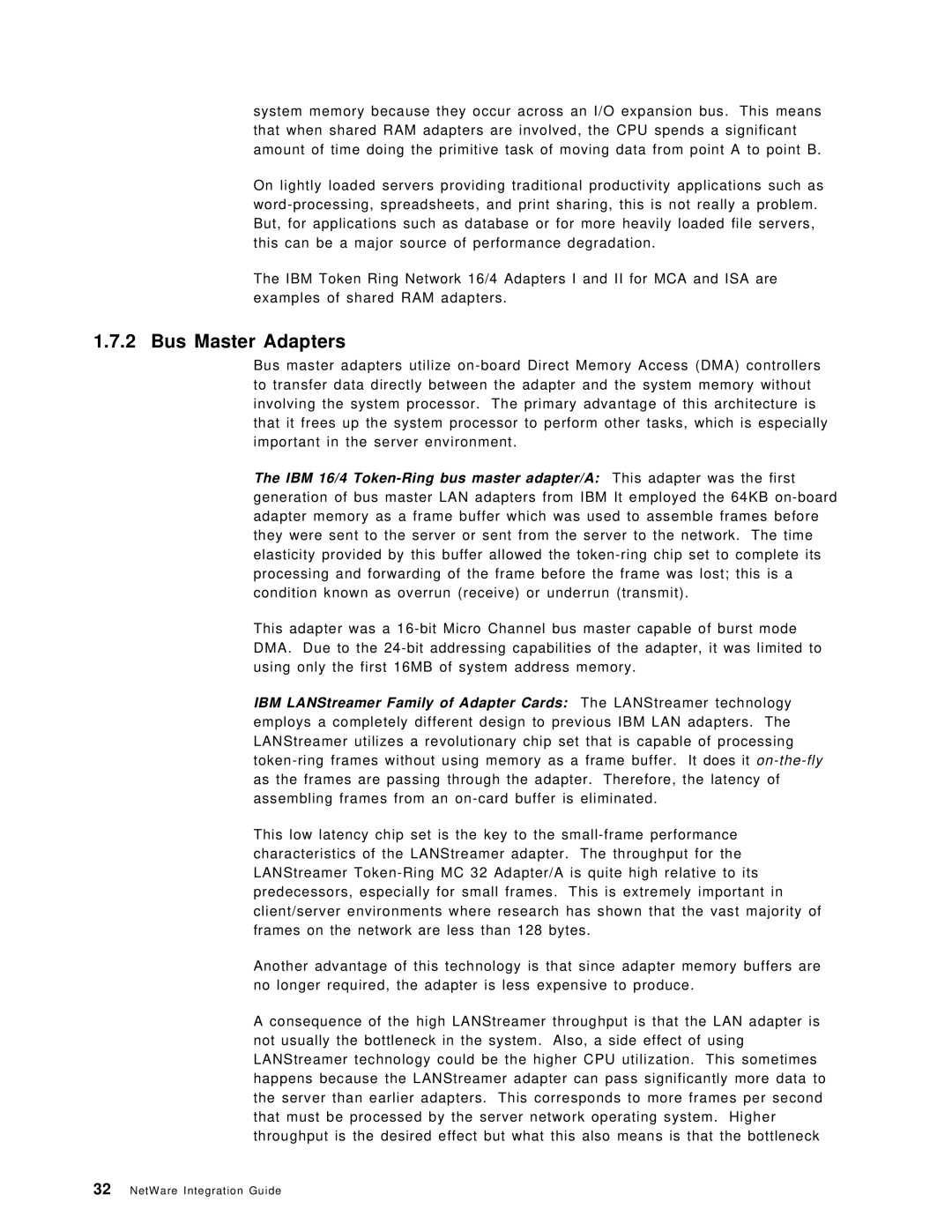system memory because they occur across an I/O expansion bus. This means that when shared RAM adapters are involved, the CPU spends a significant amount of time doing the primitive task of moving data from point A to point B.
On lightly loaded servers providing traditional productivity applications such as word-processing, spreadsheets, and print sharing, this is not really a problem. But, for applications such as database or for more heavily loaded file servers, this can be a major source of performance degradation.
The IBM Token Ring Network 16/4 Adapters I and II for MCA and ISA are examples of shared RAM adapters.
1.7.2 Bus Master Adapters
Bus master adapters utilize on-board Direct Memory Access (DMA) controllers to transfer data directly between the adapter and the system memory without involving the system processor. The primary advantage of this architecture is that it frees up the system processor to perform other tasks, which is especially important in the server environment.
The IBM 16/4 Token-Ring bus master adapter/A: This adapter was the first generation of bus master LAN adapters from IBM It employed the 64KB on-board adapter memory as a frame buffer which was used to assemble frames before they were sent to the server or sent from the server to the network. The time elasticity provided by this buffer allowed the token-ring chip set to complete its processing and forwarding of the frame before the frame was lost; this is a condition known as overrun (receive) or underrun (transmit).
This adapter was a 16-bit Micro Channel bus master capable of burst mode DMA. Due to the 24-bit addressing capabilities of the adapter, it was limited to using only the first 16MB of system address memory.
IBM LANStreamer Family of Adapter Cards: The LANStreamer technology employs a completely different design to previous IBM LAN adapters. The LANStreamer utilizes a revolutionary chip set that is capable of processing token-ring frames without using memory as a frame buffer. It does it on-the-flyas the frames are passing through the adapter. Therefore, the latency of assembling frames from an on-card buffer is eliminated.
This low latency chip set is the key to the small-frame performance characteristics of the LANStreamer adapter. The throughput for the LANStreamer Token-Ring MC 32 Adapter/A is quite high relative to its predecessors, especially for small frames. This is extremely important in client/server environments where research has shown that the vast majority of frames on the network are less than 128 bytes.
Another advantage of this technology is that since adapter memory buffers are no longer required, the adapter is less expensive to produce.
A consequence of the high LANStreamer throughput is that the LAN adapter is not usually the bottleneck in the system. Also, a side effect of using LANStreamer technology could be the higher CPU utilization. This sometimes happens because the LANStreamer adapter can pass significantly more data to the server than earlier adapters. This corresponds to more frames per second that must be processed by the server network operating system. Higher throughput is the desired effect but what this also means is that the bottleneck
32NetWare Integration Guide
